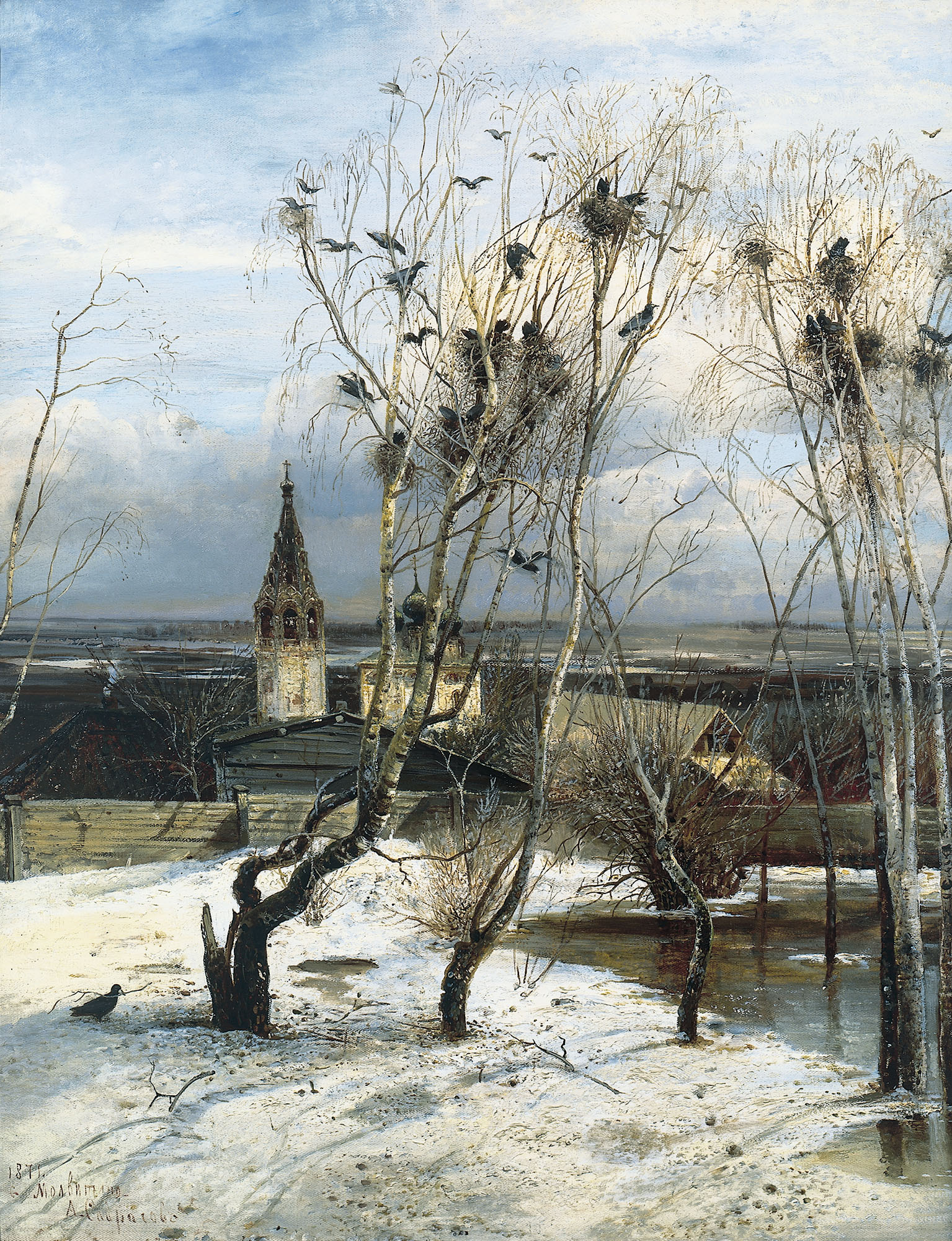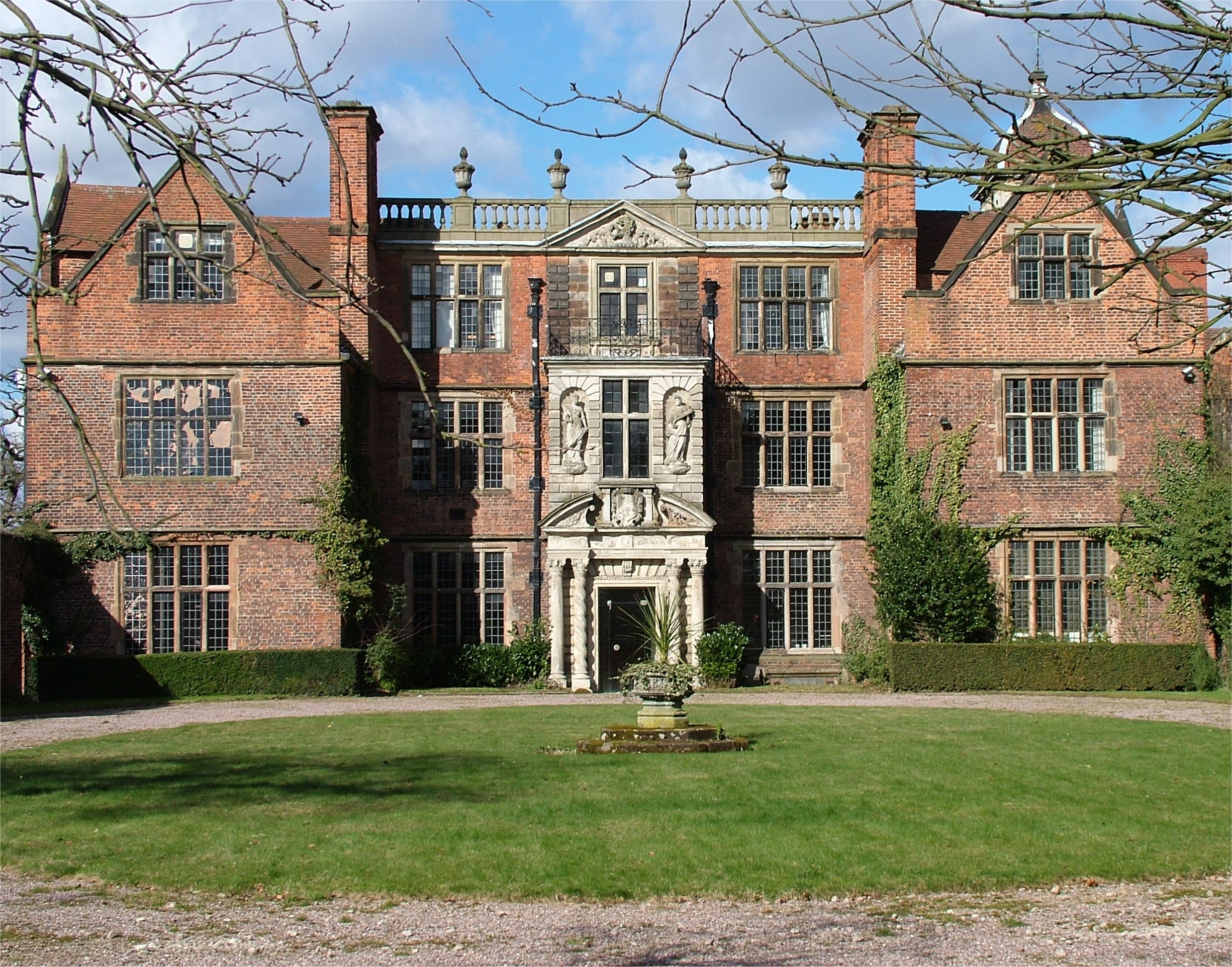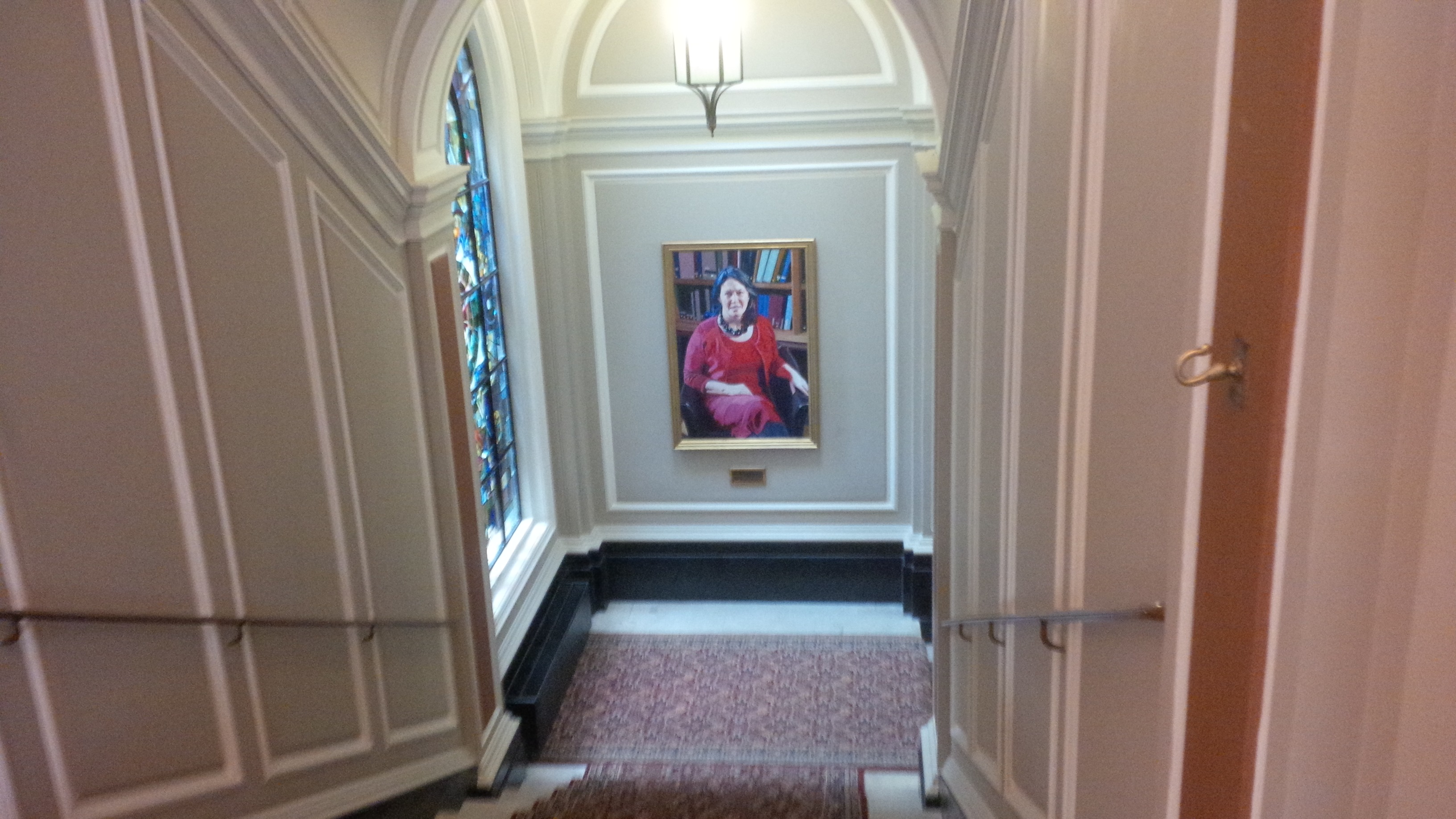|
Rookery Hall
Rookery Hall is a Georgian style mansion located off the B5074 road near the village of Worleston in Cheshire, England. Dating originally from 1816 but extensively altered in the late 19th century, the hall is listed at grade II. Since 2001 Rookery Hall has been owned and managed by Julia Hands, Hand Picked Hotel Group. The Conference centre and Health Club and Spa were added in 2011. History The hall dates from 1816, and was originally a plain late Georgian house in brick known as "The Rookery, Worleston".Latham FA, ed. ''Acton'', pp. 101, 120–1 (The Local History Group; 1995) ().de Figueiredo P, Treuherz J. ''Cheshire Country Houses'', p. 268 (Phillimore; 1988) (). The first owner was William Hilton Cooke of Chester, who owned a Jamaican sugar plantation. The estate was purchased in 1867 by Baron William Henry von Schröder, a merchant banker and son of J. Henry Schröder, the founder of Schroders. It was extended and extensively altered into an Elizabethan style ... [...More Info...] [...Related Items...] OR: [Wikipedia] [Google] [Baidu] |
Rookery Hall Worleston
A rookery is a colony of breeding rooks, and more broadly a colony of several types of breeding animals, generally gregarious birds. Coming from the nesting habits of rooks, the term is used for corvids and the breeding grounds of colony-forming seabirds, marine mammals (true seals or sea lions), and even some turtles. Rooks (northern-European and central-Asian members of the crow family) have multiple nests in prominent colonies at the tops of trees. Paleontological evidence points to the existence of rookery-like colonies in the pterosaur ''Pterodaustro''. The term ''rookery'' was also borrowed as a name for dense slum housing in nineteenth-century cities, especially in London. See also *Auca Mahuevo, for a titanosaurid sauropod dinosaur rookery *Bird colony *Heronry *Rook shooting Rook shooting was a previously popular sport in the United Kingdom, in which young rooks were shot from tree branches, often using purpose-built rifles known as rook rifles. Rook shooting ... [...More Info...] [...Related Items...] OR: [Wikipedia] [Google] [Baidu] |
Finial
A finial () or hip-knob is an element marking the top or end of some object, often formed to be a decorative feature. In architecture, it is a small decorative device, employed to emphasize the Apex (geometry), apex of a dome, spire, tower, roof, or gable or any of various distinctive ornaments at the top, end, or corner of a building or structure. A finial is typically carved in stone. Where there are several such elements they may be called pinnacles. The very top of a finial can be a floral or foliated element called a bouquet. Smaller finials in materials such as metal or wood are used as a decorative ornament on the tops or ends of poles or rods such as tent-poles or curtain rods or any object such as a piece of furniture. These are frequently seen on top of bed posts or clocks. Decorative finials are also commonly used to fasten lampshades, and as an ornamental element at the end of the handles of souvenir spoons. The charm at the end of a pull chain (such as for a ceiling ... [...More Info...] [...Related Items...] OR: [Wikipedia] [Google] [Baidu] |
Meissen
Meissen ( ), is a town of approximately 30,000 about northwest of Dresden and 75 km (46 mi) west of Bautzen on both banks of the Elbe river in the Free State of Saxony, in eastern Germany. Meissen is the home of Meissen porcelain, the Albrechtsburg castle, the Gothic architecture, Gothic Meissen Cathedral and the Meissen Frauenkirche. The ''Große Kreisstadt'' is the capital of the Meissen district. History It grew out of the early Polabian Slavs, West Slavic settlement of ''Miśni'' inhabited by Glomatians and was founded as a German town law, German town by King Henry the Fowler in 929. In 968, the Diocese of Meissen was founded, and Meissen became the episcopal see of a bishop. The Catholic bishopric was suppressed in 1581 after the diocese accepted the Protestant Reformation (1559), but re-created in 1921 with its seat first at Bautzen and now at the Katholische Hofkirche in Dresden. In 965, the Margraviate of Meissen, a frontier march of the Holy Roman Empire, ... [...More Info...] [...Related Items...] OR: [Wikipedia] [Google] [Baidu] |
Jacobean Architecture
The Jacobean style is the second phase of Renaissance architecture in England, following the Elizabethan style. It is named after King James VI and I, with whose reign (1603–1625 in England) it is associated. At the start of James's reign, there was little stylistic break in architecture, as Elizabethan trends continued their development. However, his death in 1625 came as a decisive change towards more classical architecture, with Italian influence, was in progress, led by Inigo Jones. The style this began is sometimes called Stuart architecture, or English Baroque (though the latter term may be regarded as starting later). Courtiers continued to build large prodigy houses, even though James spent less time on summer progresses around his realm than Elizabeth had. The influence of Flemish and German Northern Mannerism increased, now often executed by recruited craftsmen and artists, rather than obtained from books as in the previous reign. There continued to be very little b ... [...More Info...] [...Related Items...] OR: [Wikipedia] [Google] [Baidu] |
Calveley Hall
Calveley Hall is a country house to the west of the village of Milton Green, Cheshire, England. It was built in 1684 for Lady Mary Calveley. After Lady Mary's death the estate passed by marriage to the Leghs of Lyme. In 1818 it was remodelled for Thomas Legh, and further alterations have been carried out during the 20th century. The house and estates in excess of around Aldersey, Aldford, Golborne David and Handley were put up for sale in 1827 to satisfy a judgement in the Court of Chancery. The hall and at least some of the lands were bought by George Woolrich, who then attempted to sell some parcels of it. In 1830, Woolrich tried to lease out the hall itself. Edward Davies Davenport was living there by 1835. Robert Hopley was living there in 1841. The house is constructed in rendered brick with stone quoins. It stands on a stone plinth, has hipped roofs in Welsh slate, and three brick chimneys. The entrance front has three storeys, and is symmetrical with seven ... [...More Info...] [...Related Items...] OR: [Wikipedia] [Google] [Baidu] |
Cornice
In architecture, a cornice (from the Italian ''cornice'' meaning "ledge") is generally any horizontal decorative Moulding (decorative), moulding that crowns a building or furniture element—for example, the cornice over a door or window, around the top edge of a pedestal, or along the top of an interior wall. A simple cornice may be formed with a crown, as in crown moulding atop an interior wall or above kitchen cabinets or a bookcase. A projecting cornice on a building has the function of throwing rainwater free of its walls. In residential building practice, this function is handled by projecting gable ends, roof eaves, and rain gutter, gutters. However, house eaves may also be called "cornices" if they are finished with decorative moulding. In this sense, while most cornices are also eaves (overhanging the sides of the building), not all eaves are usually considered cornices. Eaves are primarily functional and not necessarily decorative, while cornices have a decorative a ... [...More Info...] [...Related Items...] OR: [Wikipedia] [Google] [Baidu] |
Quatrefoil
A quatrefoil (anciently caterfoil) is a decorative element consisting of a symmetrical shape which forms the overall outline of four partially overlapping circles of the same diameter. It is found in art, architecture, heraldry and traditional Christian symbolism. The word 'quatrefoil' means "four leaves", from the Latin , "four", plus , "leaf"; the term refers specifically to a four-leafed clover, but applies in general to four-lobed shapes in various contexts. In recent years, several luxury brands have attempted to fraudulently assert creative rights related to the symbol, which naturally predates any of those brands' creative development. A similar shape with three rings is called a trefoil, while a shape with five is a cinquefoil. History The quatrefoil enjoyed its peak popularity during the Gothic architecture, Gothic and Renaissance eras. It is most commonly found as tracery, mainly in Gothic architecture, where a quatrefoil often may be seen at the top of a Gothic arch, ... [...More Info...] [...Related Items...] OR: [Wikipedia] [Google] [Baidu] |
Panelling
Panelling (or paneling in the United States) is a millwork wall covering constructed from rigid or semi-rigid components. These are traditionally interlocking wood, but could be plastic or other materials. Panelling was developed in antiquity to make rooms in stone buildings more comfortable both by insulating the room from the stone and reflecting radiant heat from wood fires, making heat more evenly distributed in the room. In more modern buildings, such panelling is often installed for decorative purposes. Panelling, such as wainscoting and boiserie in particular, may be extremely ornate and is particularly associated with 17th and 18th century interior design, Victorian architecture in Britain, and its international contemporaries. Wainscot panelling The term wainscot ( or ) originally applied to high quality riven oak boards. Wainscot oak came from large, slow-grown forest trees, and produced boards that were knot-free, low in tannin, light in weight, and ... [...More Info...] [...Related Items...] OR: [Wikipedia] [Google] [Baidu] |
University Of York
The University of York (abbreviated as or ''York'' for Post-nominal letters, post-nominals) is a public Collegiate university, collegiate research university in York, England. Established in 1963, the university has expanded to more than thirty departments and centres, covering a wide range of subjects. South-east of the city of York, the university campus is about in size. The original campus, Campus West, incorporates the York Science Park and the Science Learning Centres, National Science Learning Centre, and its wildlife, campus lakes and greenery are prominent. In May 2007 the university was granted permission to build an extension to its main campus, on arable land just east of the nearby village of Heslington. The second campus, Campus East, opened in 2009 and now hosts five colleges and three departments as well as conference spaces, a sports village and a business startup company, start-up 'incubator'. The institution also leases King's Manor in York city centre. The ... [...More Info...] [...Related Items...] OR: [Wikipedia] [Google] [Baidu] |
National Register Of Historic Parks And Gardens
{{R from move ...
#REDIRECT Register of Historic Parks and Gardens of Special Historic Interest in England #REDIRECT Register of Historic Parks and Gardens of Special Historic Interest in England {{R from move ... [...More Info...] [...Related Items...] OR: [Wikipedia] [Google] [Baidu] |
River Weaver
The River Weaver is a river, navigable in its lower reaches, running in a curving route anti-clockwise across west Cheshire, northern England. Improvements to the river to make it navigable were authorised in 1721 and the work, which included eleven Lock (water transport), locks, was completed in 1732. An unusual clause in the enabling act of Parliament, the River Weaver Navigation Act 1720 (7 Geo. 1. St. 1. c. 10), stipulated that profits should be given to the County of Cheshire for the improvement of roads and bridges, but the navigation was not initially profitable, and it was 1775 before the first payments were made. Trade continued to rise, and by 1845, over £500,000 had been given to the county. The major Salt trade, trade was salt. The arrival of the Trent and Mersey Canal at Anderton in 1773 was detrimental to the salt trade at first, but ultimately beneficial, as salt was tipped down chutes from the canal into barges on the river navigation. Access to the river was i ... [...More Info...] [...Related Items...] OR: [Wikipedia] [Google] [Baidu] |
Sundial
A sundial is a horology, horological device that tells the time of day (referred to as civil time in modern usage) when direct sunlight shines by the position of the Sun, apparent position of the Sun in the sky. In the narrowest sense of the word, it consists of a flat plate (the ''dial'') and a gnomon, which casts a shadow onto the dial. As the Sun diurnal motion, appears to move through the sky, the shadow aligns with different hour-lines, which are marked on the dial to indicate the time of day. The ''style'' is the time-telling edge of the gnomon, though a single point or ''nodus'' may be used. The gnomon casts a broad shadow; the shadow of the style shows the time. The gnomon may be a rod, wire, or elaborately decorated metal casting. The style must be polar alignment, parallel to the axis of the Earth's rotation for the sundial to be accurate throughout the year. The style's angle from horizontal is equal to the sundial's geographical latitude. The term ''sundial'' can r ... [...More Info...] [...Related Items...] OR: [Wikipedia] [Google] [Baidu] |






